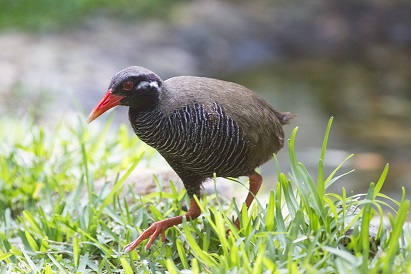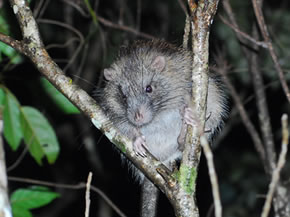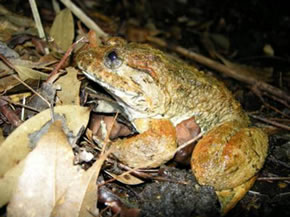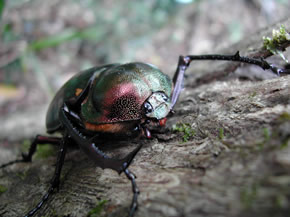Rich biodiversity
Brilliant evergreen forests
The forests of the Yambaru region are evergreen forests established in the subtropical region above the 27th parallel north, and are among the largest evergreen forests in Japan. A natural characteristic of the Yambaru region is its high levels of precipitation and humidity. The highest peak, Mount Yonaha, receives an average of 3,000 mm of rain per year, and the area around the summit is foggy all year round. As a result, there is a lot of moisture in the air, and the humidity in the forest around the top of the mountain remains high.
Only about a third of subtropical regions have the humid conditions that can support such forests, and so forests like the ones in the Yambaru region are rare worldwide. In Japan, subtropical forests are found on the Okinawa, Yaeyama, Amami, and Ogasawara Islands.
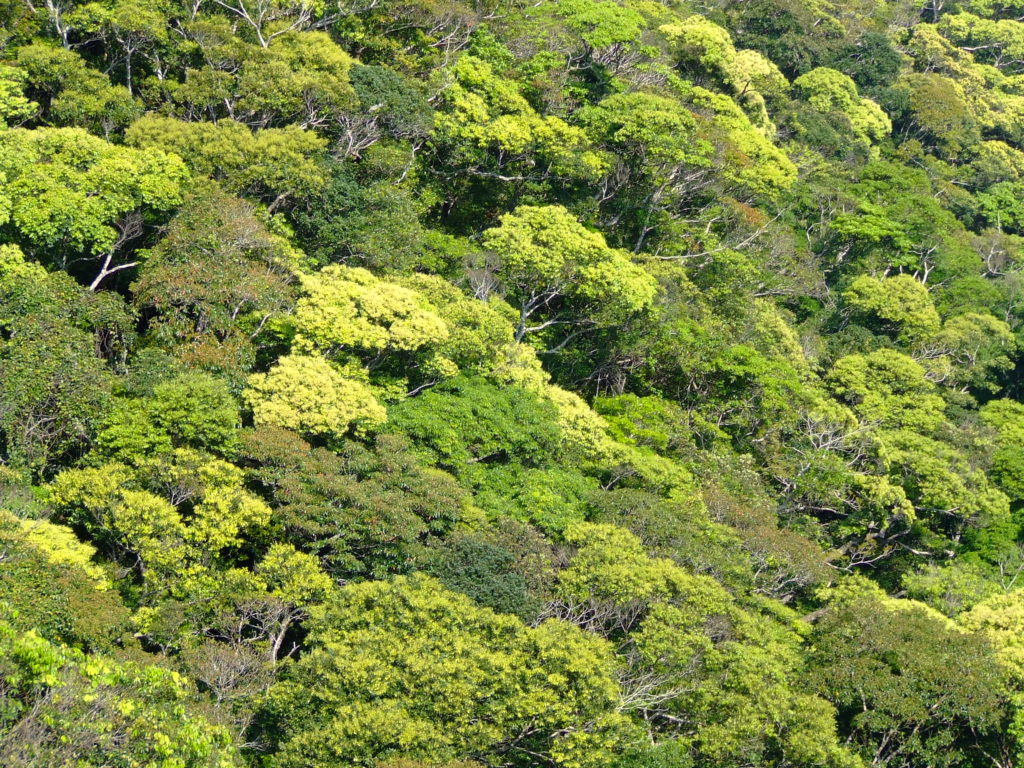
The characteristic landscape of the leafy evergreen forests of the Yambaru region, dominated by Itajii trees (the Okinawan local name for Sudajii), includes a distinctive broccoli-shaped , the glorious fresh green of spring, and the blooming of tree flowers such as Iju. Yambaru’s forests offer a habitat to a large number of species unique to the region, such as Okinawa rails, Okinawa woodpeckers, Cheirotonus jambar beetles, Sekkoku orchids, and Kunigami damselflies, all of which add to the appeal of the forests of the Yambaru region.
Unique diversity of living things
Yambaru is home to a very high percentage of all species known to be living in Japan, including about half of the country’s bird species and a quarter of its native frog species. Although the area of the Yambaru region (the combined area of the three northern villages) occupies less than 0.1% of Japan’s total area, a wide variety of plants and animals live and grow in this small area, and many species are in danger of extinction because of their low numbers.
Furthermore, the Ryukyu archipelago is known for its many endemic species that cannot be found anywhere else, and the Yambaru region, with its rich forests, is home to numerous endemic species such as the Okinawa rail, the Okinawa woodpecker, the Okinawa wart frog, and the Cheirotonus jambar beetle.
For such a small area, Yambaru is home to a great diversity of living things, including many rare species, which have created their own unique ecosystem and live in harmony with each other.
